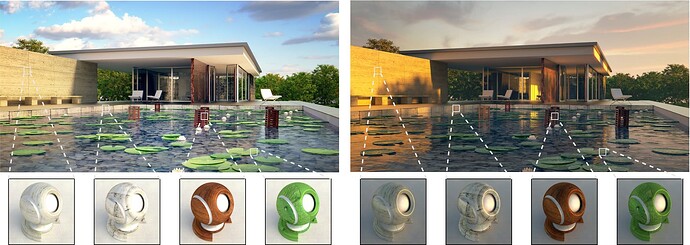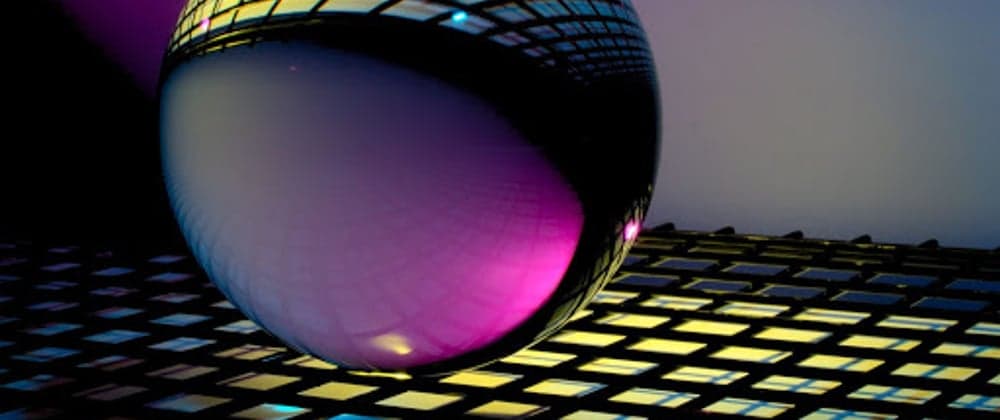Neural rendering techniques have emerged as a transformative force in the field of computer graphics, offering innovative solutions to improve rendering efficiency while maintaining or even enhancing visual quality. As the demand for high-fidelity graphics continues to grow across various applications—ranging from video games and films to virtual reality and architectural visualization—neural rendering provides a compelling approach to meet these demands. This exploration delves into the principles of neural rendering, its advantages, applications, and future potential, highlighting how these techniques enhance efficiency in rendering processes.
What is Neural Rendering
Neural rendering refers to the application of artificial neural networks (ANNs) to the rendering process, allowing for the generation of images and visual effects through learned representations. Unlike traditional rendering methods, which rely heavily on geometric calculations and physical simulations, neural rendering leverages machine learning to produce high-quality images more efficiently.
The Role of Neural Networks
Neural networks are computational models inspired by the human brain, consisting of interconnected nodes (neurons) that process information. In the context of rendering, these networks are trained on large datasets of images and their corresponding features, enabling them to learn patterns and relationships within the data. Once trained, the neural network can generate new images or enhance existing ones based on the learned representations.
Key Advantages of Neural Rendering Techniques
Neural rendering offers several advantages over traditional rendering methods, particularly in terms of efficiency, quality, and flexibility.
1. Reduced Computational Load
One of the most significant benefits of neural rendering is the reduction in computational load. Traditional rendering techniques often require extensive calculations involving light transport, shading models, and geometry processing. In contrast, neural networks can approximate these processes, allowing for faster image generation.
- Implications: This reduction in computational requirements enables real-time rendering of complex scenes, making it feasible for applications like video games and interactive simulations. Users can experience high-quality visuals without the need for powerful hardware.
2. Enhanced Visual Quality
Neural rendering techniques excel in generating high-quality images, particularly in scenarios where traditional methods may struggle. By leveraging learned representations, neural networks can produce realistic textures, lighting effects, and fine details that enhance the overall visual experience.
- Implications: This capability allows for the creation of visually stunning content that captivates audiences, whether in film, gaming, or virtual environments. The improved quality can also reduce the need for extensive post-processing.
3. Efficient Use of Resources
Neural rendering techniques optimize resource utilization by focusing on important features and details within a scene. Instead of processing every element uniformly, neural networks can prioritize aspects that significantly impact visual quality, streamlining the rendering process.
- Implications: This efficiency leads to faster rendering times and lower energy consumption, making neural rendering an attractive option for both developers and users. It aligns with the industry’s growing emphasis on sustainability and eco-friendly practices.
4. Flexibility and Adaptability
Neural rendering techniques can adapt to various applications and requirements. They can be trained on specific datasets to cater to different styles, genres, or visual effects, allowing for a wide range of use cases.
- Implications: This adaptability makes neural rendering suitable for diverse industries, including gaming, film, architecture, and virtual reality. Developers can customize models to achieve desired outcomes without extensive re-engineering.
5. Real-time Capabilities
The ability to perform real-time rendering is a game-changer in many applications. Neural rendering techniques can generate images quickly enough to provide immediate feedback, enhancing interactivity and immersion.
- Implications: In virtual reality and gaming, real-time capabilities are crucial for maintaining user engagement. Neural rendering allows developers to create dynamic environments that respond to user actions seamlessly.
Applications of Neural Rendering Techniques
Neural rendering techniques have found applications across various domains, each benefiting from the efficiency and quality improvements these methods offer.
1. Video Games
In the gaming industry, the demand for high-quality graphics and smooth performance has never been higher. Neural rendering techniques enable developers to create visually stunning environments and characters while maintaining high frame rates.
- Example: Games like “Cyberpunk 2077” and “The Last of Us Part II” utilize neural rendering techniques to enhance textures and lighting, creating immersive worlds that captivate players.
2. Film and Animation
Filmmakers and animators increasingly rely on neural rendering to produce high-quality visual effects and animations. The ability to generate realistic imagery quickly allows for more creative freedom and faster production times.
- Example: Productions like “The Mandalorian” leverage neural rendering for virtual backgrounds and environments, enabling seamless integration of live-action and CGI elements.
3. Architectural Visualization
Architects and designers use neural rendering techniques to create realistic visualizations of buildings and spaces. These methods allow for quick iterations and adjustments, providing clients with compelling presentations.
- Example: Software like Lumion and Twinmotion incorporates neural rendering to generate lifelike renderings of architectural designs, enabling architects to showcase their work effectively.
4. Virtual and Augmented Reality
In virtual and augmented reality applications, neural rendering techniques enhance user experiences by providing realistic and responsive environments. The ability to render high-quality visuals in real-time is essential for immersion.
- Example: VR applications for training simulations or interactive storytelling benefit from neural rendering’s efficiency, allowing users to engage with dynamic and lifelike environments.
5. Artistic Applications
Artists and designers explore neural rendering to create unique visual styles and effects. By training models on specific artistic styles, creators can generate images that blend traditional techniques with modern technology.
- Example: Tools like DeepArt and Artbreeder allow users to apply neural rendering techniques to their artwork, enabling innovative expressions and creative exploration.
Techniques in Neural Rendering
Several techniques underpin neural rendering, each contributing to the overall efficiency and quality of the rendering process.
1. Neural Texture Synthesis
Neural texture synthesis involves generating textures based on learned patterns from existing images. By analyzing the characteristics of textures in a dataset, neural networks can create new textures that resemble real-world materials.
- Efficiency: This technique reduces the need for manual texture creation and allows for the rapid generation of diverse textures, enhancing the realism of rendered scenes.
2. Style Transfer
Style transfer techniques leverage neural networks to apply the visual style of one image to another. This approach allows artists to create unique visuals by blending content and style from different sources.
- Efficiency: By automating the style transfer process, creators can quickly produce visually striking images without extensive manual intervention.
3. Neural Radiance Fields (NeRF)
Neural radiance fields (NeRF) represent a novel approach to scene representation, enabling the generation of 3D scenes from 2D images. This technique uses neural networks to model how light interacts with surfaces, allowing for realistic rendering of complex scenes.
- Efficiency: NeRF reduces the need for detailed 3D models, simplifying the rendering pipeline while achieving high-quality results. This method is particularly useful for capturing intricate details in complex environments.
4. Image-to-Image Translation
Image-to-image translation techniques enable the conversion of one type of image into another through neural networks. This approach can be used to enhance images, change styles, or generate new visual content.
- Efficiency: By automating the translation process, developers can quickly produce variations of images, streamlining workflows in creative industries.
5. Denoising Techniques
Neural networks can be employed to denoise rendered images, improving visual quality by reducing noise and artifacts. This technique is particularly valuable in ray tracing, where noise can be prevalent due to limited sampling.
- Efficiency: Denoising reduces the time required for post-processing while enhancing the overall quality of rendered images, allowing for faster iterations in production.
Challenges and Considerations
While neural rendering techniques offer significant advantages, several challenges must be addressed to fully realize their potential.
1. Training Data Requirements
Neural networks require large datasets for training to achieve optimal performance. Collecting and curating high-quality data can be time-consuming and resource-intensive.
- Consideration: Developers must ensure that they have access to diverse and representative datasets to train models effectively.
2. Computational Requirements
Training neural networks can be computationally demanding, requiring powerful hardware and significant processing time. This requirement may limit accessibility for some developers.
- Consideration: Organizations must invest in appropriate hardware and infrastructure to support neural rendering workflows.
3. Generalization and Overfitting
Neural networks can struggle with generalization, leading to overfitting where the model performs well on training data but poorly on unseen data. This issue can impact the quality of generated imagery.
- Consideration: Developers need to implement regularization techniques and validation processes to ensure models generalize effectively.
4. Integration with Existing Pipelines
Incorporating neural rendering techniques into established rendering pipelines can present challenges. Developers must ensure compatibility with existing tools and workflows.
- Consideration: Careful planning and testing are necessary to facilitate smooth integration and maximize the benefits of neural rendering.
5. Real-time Performance
Achieving real-time performance with neural rendering techniques can be challenging, particularly for complex scenes. Ensuring that rendering remains responsive is crucial for interactive applications.
- Consideration: Developers should focus on optimizing models and algorithms to balance quality and performance effectively.
The Future of Neural Rendering
The future of neural rendering holds exciting possibilities as technology continues to advance. Several trends and innovations are likely to shape the development of neural rendering techniques in the coming years.
1. Enhanced AI Models
As research in artificial intelligence progresses, neural rendering techniques will benefit from advancements in AI models. More sophisticated algorithms will enable higher-quality image generation with improved efficiency.
- Future Implications: Enhanced AI models may lead to breakthroughs in rendering capabilities, allowing for even more realistic and detailed visuals.
2. Broader Adoption Across Industries
The versatility of neural rendering techniques positions them for broader adoption across various industries. As developers recognize the benefits of these methods, more applications will incorporate neural rendering into their workflows.
- Future Implications: Increased adoption will drive innovation and investment in neural rendering technologies, leading to new applications and use cases.
3. Real-time Neural Rendering
Achieving real-time neural rendering remains a critical goal for many applications, particularly in gaming and interactive experiences. Continued research will focus on optimizing neural networks for real-time performance.
- Future Implications: Real-time neural rendering could revolutionize gaming and virtual reality, providing users with immersive experiences that seamlessly blend realism and interactivity.
4. Collaborative Tools and Platforms
As the demand for neural rendering grows, collaborative tools and platforms will emerge to support developers and artists. These tools will streamline workflows and facilitate the integration of neural rendering techniques.
- Future Implications: Enhanced collaboration will foster creativity and innovation in the field, enabling artists and developers to push the boundaries of visual storytelling.
5. Sustainability Considerations
With increasing emphasis on sustainability, neural rendering techniques may evolve to prioritize energy-efficient approaches. Researchers will explore ways to reduce the environmental impact of rendering processes.
- Future Implications: Sustainable neural rendering practices will align with the industry’s goals of reducing energy consumption and promoting eco-friendly solutions.
Wrap Up
Neural rendering techniques represent a significant advancement in the field of computer graphics, offering innovative solutions to improve rendering efficiency while enhancing visual quality. By leveraging the power of artificial neural networks, developers can reduce computational loads, generate stunning imagery, and streamline workflows across various applications.
The advantages of neural rendering—such as reduced computational requirements, enhanced visual quality, and real-time capabilities—make it an attractive option for industries ranging from gaming and film to architecture and virtual reality. As technology continues to evolve, the future of neural rendering holds exciting possibilities, with advancements in AI models, broader adoption, and a focus on sustainability.
While challenges exist, such as data requirements and integration with existing pipelines, the potential benefits of neural rendering techniques far outweigh the obstacles. As artists and developers embrace these innovations, they will unlock new creative possibilities and shape the future of visual experiences. The journey of neural rendering has just begun, and the possibilities are limitless.



